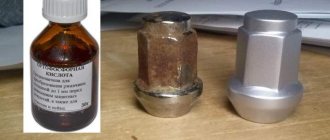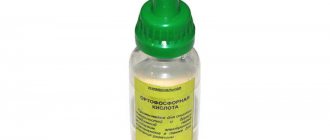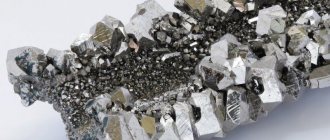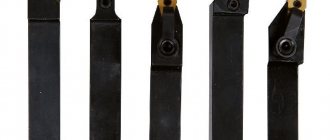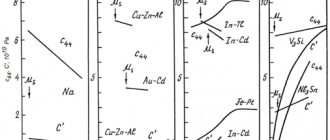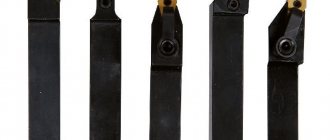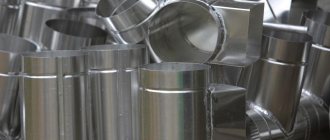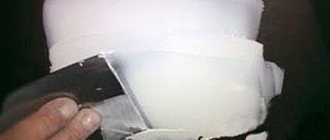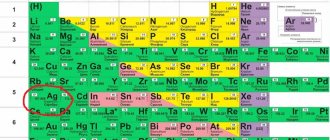General properties
All acids contain hydrogen atoms that can react. Thus, an acid is a complex substance whose molecules consist of different numbers of hydrogen atoms and an acid residue. These compounds have a sour and often slightly metallic taste. Upon contact with them, the indicators acquire a different shade, up to a radical change in color.
Chemical properties common to all acids:
- All substances containing oxygen form water and acid oxide during decomposition.
- Oxygen-free compounds break down into simple elements.
- Oxidizing agents react with all metals located to the left of H in the activity series.
- Acids react with salts formed by a weaker compound.
The physical properties of substances can differ radically. For example, some of them have a smell, while others have no smell at all.
Acids can be liquid, gaseous and solid. Solid compounds include, for example, C2H204 and H3BO3.
Consequences and prevention
Acid poisoning is often fatal. If treatment is started on time, a favorable prognosis is possible, but in many cases the person remains disabled. The action of all acids negatively affects the condition of the digestive tract, the brain and nervous system suffer.
Intoxication can be avoided by being careful when working with acids. Toxic substances should not be left in places accessible to children and animals. When using toxic compounds, wear protective clothing, hide your eyes behind glasses, and wear gloves on your hands.
The most terrible and dangerous acid is not available to the common man. However, it is important to be careful when using such substances in laboratories. If signs of poisoning occur, you must immediately contact a medical facility.
Substance concentration
Chemists often have to solve problems that involve determining the percentage of pure acid present in a solution. In such cases, the value sought is concentration.
This is a value that allows you to determine the quantitative composition of a liquid chemical . For example, in order to find out how much pure sulfuric acid is in a dilute solution, you need to pour a small amount of the mixture into a measuring cup, weigh it and determine the desired value using the density table. This table is used in calculations, since density is inextricably linked with concentration.
Main classification
Most often, acidic substances are divided into oxygen-containing and oxygen-free. The composition of the latter compounds differs in that they do not contain oxygen, but contain hydrogen. In this regard, their names are always supplemented with the word “hydrogen”. For example, hydrogen chloride, hydrogen sulfide.
In addition, acids are classified according to the number of hydrogen atoms.
So, they are divided into the following types:
- monobasic;
- dibasic;
- tribasic.
But there are also organic acids, that is, organic substances that exhibit properties inherent in acidic compounds. Of these, the most famous are vinegar, oxalic, formic, lemon, milk and apple.
All acidic substances and bases are divided into strong and weak . But it is necessary to understand that these concepts are in no way related to the concentration of compounds. The strength of an acid is determined by its ability to enter into a chemical reaction, releasing hydrogen ions.
Thus, a substance is considered strong if this process occurs easily.
Treatment for poisoning
Before doctors arrive, it is permissible to provide first aid to the victim. In case of poisoning, you cannot do without qualified help, but some actions can alleviate the patient’s condition.
We recommend: Ergot poisoning (ergotism) - symptoms and signs of the disease
What to do:
- If the cause of poisoning is gas, the patient is taken out or taken to fresh air;
- The person is placed on a horizontal surface and provided with complete rest;
- It is forbidden to rinse the stomach; this can lead to repeated burns of the esophagus;
- Ice is placed on the abdominal area; this action will help stop internal bleeding;
- You cannot give a person pills and drinks, so as not to provoke negative consequences.
Strong and weak reagents
If a reagent in an aqueous solution completely disintegrates into ions, that is, dissociates, then it is strong, since weak chemical compounds never completely dissolve.
In addition, a weak acid can be distinguished by measuring its conductivity. Strong compounds are good electrolytes. Strong bases also disintegrate when placed in water. It should be noted that bases are also called hydroxides or hydroxides.
There are special lists of weak and strong acids and bases. The table below can also be used to classify reagents.
| Strong acid | Weak acid | Strong foundation | Weak foundation |
| HCI hydrochloric or hydrochloric chloride | HF hydrogen fluoride | NaOH sodium hydroxide | Mg(OH)2 magnesium hydroxide |
| HBr hydrogen bromide | CH3COOH acetic | KOH potassium hydroxide | Fe(OH)2 iron(II) hydroxide |
| HI hydrogen iodide | H2SO3 sulfurous | Ca(OH)2 calcium hydroxide | Zn(OH)2 zinc hydroxide |
| HNO3 nitrogen | H2S hydrogen sulfide | Ba(OH)2 barium hydroxide | NH4OH ammonium hydroxide |
| HClO4 chlorine | HNO2 nitrogenous | LiOH lithium hydroxide | Fe(OH)3 iron(III) hydroxide |
| H2SO4 sulfuric | H2SiO3 silicon |
It should also be noted that oxygen-containing carbonic (H2CO3) and orthophosphoric (H3PO4) or phosphoric acids are weak. To the strong ones, it is necessary to add chrome, which is medium in strength.
In addition, it must be taken into account that modern chemistry allows scientists to create new compounds. In this regard, the list of acids, both strong and weak, is constantly updated.
Chemical reactions
When a strong acid is combined with the same base, a neutral solution is obtained. The chemical reaction that occurs in this case is called neutralization . If you replace the base with a weak one, then only the acidic substance dissociates completely.
The second component does not completely disintegrate into ions.
A weak base reacts only slightly with a weak acid.
When an acidic compound reacts with a strong base, the first reactant undergoes partial dissociation, while the second reactant dissociates completely.
The resulting solution has weak base properties.
pH value
When carrying out dissociating reactions, it is important to correctly determine the acidity level of the water. To express it quantitatively, a pH value is used, called the strength, weight or potential of hydrogen. It allows you to measure the activity of hydrogen ions. If the pH level exceeds 7, then the substance has acidic properties, but if this indicator is less than 7, then the properties are basic.
Determination methods
The results of chemical reactions in which any substance participates directly depend on the level of its acidity. That’s why chemists always measure this indicator.
There are several methods for determining pH:
- Instrumental method. In this case, a pH meter is used. This device transforms the concentration of protons in a liquid into an electrical signal.
- Indicators. These are substances that change color depending on pH. The use of various indicators allows you to obtain fairly accurate data on the level of acidity.
- Salt. A salt is a compound of ions that dissociates completely in a weak aqueous solution. To determine the acid-base properties of a saline solution, first of all, you need to establish and study the properties of the ions in the solution.
Buffer solution
A buffer solution is a substance characterized by the presence of a constant concentration of hydrogen ions.
When a strong acid or the same base is added in small doses, these solutions retain their original acidity level.
To prepare such a mixture, you need to mix a weak acidic substance or base with an appropriate salt.
When preparing a buffer solution, the following factors must be considered:
- The range of acidity levels at which a substance will become effective.
- The capacity of the solution, that is, how much of a strong acidic compound or base can be added to the mixture without changing its pH.
- When combining substances, there should be no reactions that could affect the composition of the solution.
Professional storage
But let's figure out what it is recommended to store these acids in in industry (besides glass). Here's what the instructions from chemical manufacturers say on this matter.
Sulfuric acid
- Can be transported in barrels and tanks made of corrosion-resistant steel grade 06ХН28МДТ. A passivation layer forms on the metal and further interaction with the container stops.
- High density polyethylene (PEHD), polypropylene (PP), Teflon (aka polytetrafluoroethylene = PTFE, also known as fluoroplastic-4).
In practice, concentrated sulfuric acid causes PEHD and PP to brown (char on the inside), which is likely to impair its purity. But it does not penetrate through these plastics. Teflon... needs to be checked, and it’s a bit expensive. Sulfuric acid of battery concentration (1.27-1.28 g/cm3) can be stored in a PP canister for many years, the canister does not turn brown, and the amount of acid does not decrease (if, of course, the lid is screwed on properly and tightly).
Hydrochloric acid
- In steel rubberized (rubber-coated inside) barrels and tanks.
- UPVC (Unplasticized Polyvinyl Chloride - unplasticized polyvinyl chloride, uPVC), reinforced (outside) with a shell of glass fiber impregnated with epoxy resin.
- High density polyethylene, HDPE.
- Polypropylene, PP, reinforced with glass fiber impregnated with epoxy resin.
As experience and experiments have shown, all these industrial storage methods are only suitable for short-term storage or transportation (“in barrels and tanks”). Preserving hydrochloric acid for many years will probably only be possible in a glass container with a glass stopper (and it is not clear what kind of lubricant: someone uses silicone oil).
Hydrochloric acid seeps through fluoroplastic (= Teflon, PTFE), just like through PP/PEHD, and this also turns brown.
Nitric acid
- Concentrations of more than 92% are in aluminum barrels and tanks. Aluminum is either pure or an alloy that does not contain copper. And also from stainless steel grades (imported) 304L and DIN 1.4361.
- Concentration 60-70% - in barrels and tanks made of corrosion-resistant Russian steel grade X18N9T, imported - 304L, 316L, 321.
- It turns out that even ordinary glass containers are not suitable for storing especially pure nitric acid (a reaction takes place and the acid becomes contaminated) - you need quartz glass or silicate bottle glass silicified from the inside (the inner surface is chemically treated for 6-12 hours with boiling 70% nitric acid followed by calcination at a temperature of 400-500°C for 3 hours).
- Polyvinyl chloride (PVC). More precisely, uPVC is unplasticized polyvinyl chloride, which does not contain plasticizers. Reinforced with fiberglass impregnated with polyester/epoxy resin.
- Polyvinylidene fluoride (PVDF).
- Ethylene chlorotrifluoroethylene (ECTFE).
- Teflon (aka polytetrafluoroethylene = PTFE - polytetrafluoroethylene, aka fluoroplastic-4).
Banal PVC, fluoroplastic, aluminum - this is what, it turns out, you need to store nitric acid. Also in Teflon containers (there are some, but they are small and almost opaque). Or then it’s easier to buy a glass bottle with a Teflon stopper. And it’s very simple and cheap - a Teflon plug. Or cut it yourself to the desired shape and diameter on a lathe from a PTFE rod.
The most dangerous acid compounds
Today, the strongest acid in the world is considered to be antimony hydrofluoride pentafluoride . Its chemical formula is HFSbF5. There is no exact data on the activity of this compound, but it has been established that its 55% solution is almost a million times stronger than concentrated sulfuric acid.
The next most powerful is the carborane acid compound. This substance may only be stored in a special container. It is also many times more dangerous than sulfur and even dissolves glass.
Another super acid is hydrofluoric acid . It is colorless and, like the previous substance, can corrode glass. Polyethylene is used to transport this caustic compound. The substance reacts well with most metals, but does not interact with paraffin. The compound is toxic, even its vapors are hazardous to health. Acid has the effect of a drug.
The most famous strong substance is sulfuric acid. Due to its large production volumes, some chemists consider it the most dangerous in the world. As the concentration of the reagent increases, so does its danger to human health, although even solutions of sulfuric acid compounds can cause serious harm. This substance oxidizes metals and is extremely caustic; even the vapors of the reagent are very dangerous. Upon contact, damage occurs to the skin and mucous membranes, respiratory organs, and internal organs of a person.
Formic acid, which is often used in everyday life, is also a toxic chemical. This situation is explained by the fact that danger arises only at high concentrations of the substance. Under normal conditions, it is colorless, easily forms aqueous solutions, and also successfully dissolves in acetone.
At a concentration of less than 10%, the reagent only causes irritation. If this indicator is elevated, then the compound can corrode tissue and many other substances. Its vapors damage the eyes, mucous membranes and respiratory tract. If ingested, serious poisoning occurs. But in minimal concentrations, the reagent is successfully processed and excreted from the body. It is present in small doses in fruits, insect secretions, and nettles.
Nitric acid is a powerful poison. It mixes well with water in different proportions. The reagent is extremely dangerous for humans. Its vapors cause serious harm to the respiratory organs and mucous membranes. When exposed to acid, the skin becomes yellow and ulcers remain on it. Affected areas require a long recovery process.
When exposed to heat or light, nitric acid breaks down, becoming a fairly toxic gas. The substance does not have a chemical reaction with glass, and therefore this material is used to store the reagent. The creator of the poisonous compound is the alchemist Jabir.
The strongest acid in the world
The title of one of the strongest and aggressive acids in the world belongs to carborane. This compound came about through scientists experimenting to create something sustainable.
It is stronger than brimstone, but does not have the same aggressiveness as hers. The compound contains eleven bromine atoms and the same number of chlorine atoms. In space, the molecule takes the shape of a regular polyhedron - an icosahedron.
Due to this arrangement of atoms, the compound is highly stable.
Such an acid is capable of reacting with the most “stubborn” gases – inert ones. Scientists are trying to achieve a reaction with xenon. The strongest acid has brought success to many professors, but research continues.
Titration curves
Titration curves are a graph of the dependence of a substance parameter that is associated with the concentration of the reagent being titrated, the titrant, or the product of a chemical reaction, on the degree of progress of the process. If an acid-base reaction takes place, then the pH level is an indicator of the concentration of each part of it.
There are theoretical and experimental curves . Theoretical ones are used to justify the choice of indicator. Their calculation is carried out using the reaction equation and data on the initial concentration of the compounds entering the reaction. Experimental curves allow us to determine equivalence points. They are obtained by measuring one of the properties of the system during the titration process.
The course and result of the chemical reactions into which any acid enters directly depend on whether the substance is strong or weak. Special chemical tables contain the names of the most common compounds, which allows you to accurately determine the strength of the reagent.
How to choose soldering acid
It is noteworthy that if a substance contains a large amount of visible sediment, then it can be argued that the acid used is of poor quality or old.
It is necessary to choose a flux taking into account the area of its application, since this determines not only its constituent components, but also what intensity of the solution should be.
- Orthophosphoric. Often used for rusty parts, where oxides need to be removed from the metal surface.
- Solyanaya. Designed for any type of work, as it has a wide range of actions for processing ferrous and non-ferrous metals, as well as their alloys.
- Sulfuric. It is quite aggressive, which is why it is used less often. It allows you to work well with parts that are difficult to solder and workpieces of large thickness, since the negative impact of the substance is not dangerous for them. Due to the high aggressiveness of sulfuric acid, it is used for parts that are difficult to solder, as well as for workpieces of large thickness, since it will not cause much harm to them.
It is necessary to select a solution taking into account the thickness and dimensions of the parts being processed. At the same time, when working with contacts and delicate elements, any acid must first be diluted.

